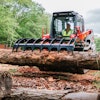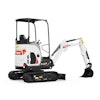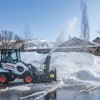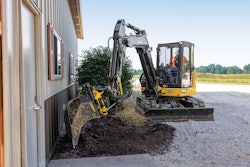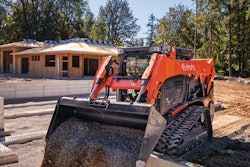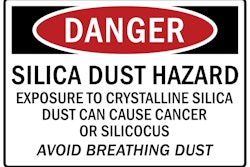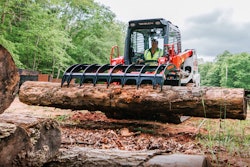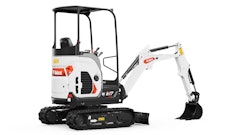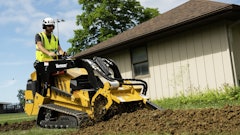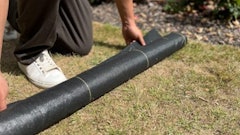
The hardscape industry is experiencing a shift away from gas engines toward cordless battery-powered tools and equipment.
This transition is being spurred in part by a growing number of cities and states that have banned gas-powered tools and equipment in recent years due to concerns of environmental sustainability.
The rise of lithium-ion outdoor power equipment
Modern lithium-ion technology has now advanced to the point of disrupting all kinds of industries once dominated by gas-powered engines. In 2022 as CNBC reported, cordless battery-powered units accounted for 66 percent of sales in the outdoor power tools market.
As the concrete industry has evolved over time, so have the tools that hardscape professionals use to shape and design. And yet, in recent decades, the gas-driven equipment and processes that have come to dominate the hardscape space have gone largely unchanged.
The benefits of battery-powered tools and equipment
Battery-powered hardscape tools and equipment offer a wide array of safety and productivity benefits that make them attractive alternatives to traditional gas-powered models.
No fuel frustrations
The mixture of gas and oil needed to run gas-powered engines can be a common source of frustration and lead to a decrease in efficiency on the jobsite. Getting the ratio right or wrong can be the difference between a minor pain and destroying a sparkplug, grinding a project to a halt for a trip to the hardware store. Additionally, removing the elements of additional fuel, such as ethanol, eliminates the common corrosion or deterioration of equipment over time. With no fuel required, battery-powered options remove the uncertainty surrounding fuel contents and mixtures, protecting a professional’s equipment and driving efficiency.
No emissions
Gas-powered equipment is a significant emitter of greenhouse gases: Operating a single gas-powered lawnmower for as little as one hour emits as much pollution as driving a car for 45 miles, according to the Environmental Protection Agency. Battery-powered alternatives have the advantage of not generating any emissions at all, making them much more appealing from a sustainability perspective.
The comparably low carbon footprint of battery-powered tools not only benefits the environment, it also protects the health and wellbeing of workers. As the CDC notes, hardscape and other operators who regularly work with fume-emitting gas-engines are at a higher risk of life-threatening carbon monoxide poisoning. Their environmental impacts aside, gas emissions are especially damaging to operators when working in confined spaces that lack ventilation.
With battery-power, hardscape professionals are free to operate equipment from power trowels to concrete saws without fear of exposure to damaging gas emissions, even indoors.
Push button start
The act of starting the typical gas-powered plate compactor can be time consuming, with multiple variables impacting the engine's start. Priming and choking the engine, ensuring the on/off switch and throttle are in the correct position and tricky pull-starts that jam up or simply refuse to turn the engine over all factor into an operator's efficiency throughout the day. With lithium-ion battery-power, starting even the most heavy-duty piece of outdoor power equipment.
Less noise
Another benefit of battery-power is its potential to dramatically reduce noise pollution on the jobsite.
Roughly 22 million workers are exposed to dangerous levels of noise in the workplace every year, according to the Center for Disease Control. Gas-powered outdoor power equipment can be particularly loud, reaching as high as 90 decibels, pushing the limit of what is permitted by the Occupational Safety and Health Administration.
Battery-powered tools and equipment are much quieter in comparison, allowing a safer and more productive jobsite. The lowered level of noise reduces the risk of hearing loss and makes it easier for workers to communicate.
No engine maintenance
Servicing and repairing gas-driven tools and equipment can be time consuming, costly and lead to prolonged periods of downtime. Battery-powered tools replace finicky gas-engines with cordless electric motors that require little to no maintenance.
Bottom line
The outdoor power equipment industry is experiencing a rise of lithium-ion batteries on the jobsite, driven by various environmental and safety regulations. As an increasing number of cities and states consider the shift away from gas-powered outdoor equipment, more hardscape professionals must weigh the benefits of one technology over the other. The transition from gas-operated to battery-powered equipment introduces enhanced efficiency and performance, while eliminating the common frustrations of managing gas equipment.

